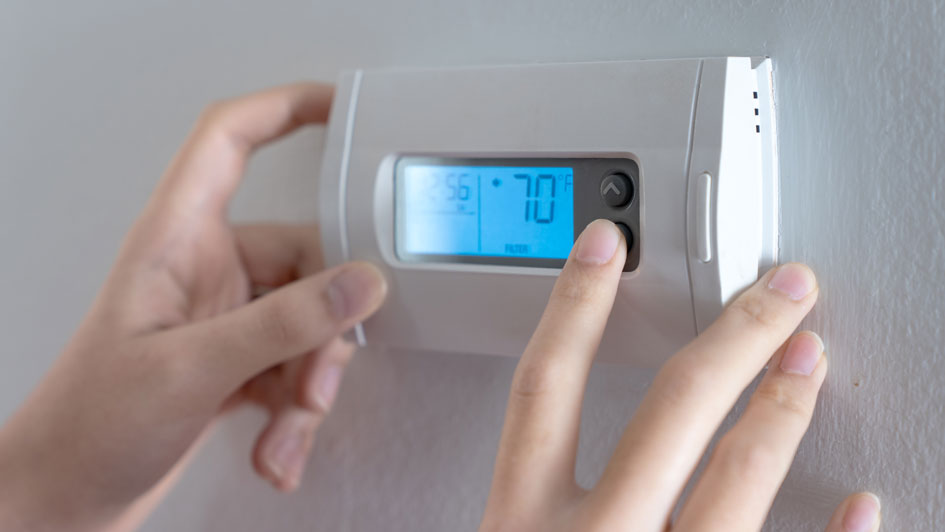
Everyone’s always looking to save money on their utility bills, but it turns out there’s a way to keep costs down, even when you're out of the house.
The secret is your thermostat. By using automatic schedules, you can structure its daily schedule around your personal preferences. That means you can have different temperature settings for when you’re at home, away or even when you’re asleep.
If you're willing to make these adjustments, you can enjoy comfy temperatures while also keeping more of your money. Take a look at a few ways your thermostat doesn't have to use up all your summer spending money:
While at Home
Whenever you're at home, you want comfortable temperatures. For the most part, you probably have your thermostat lower in the summer while you are in the house to make the most of the cool air.
But in terms of energy efficiency, the best range for the summer is actually around 78 and 80 degrees Fahrenheit. By adjusting things a few degrees, you'll avoid the worst of summer while still lowering your monthly energy bill.
While Out of the House
When setting the temperature for whenever you're gone, it's extremely common to move the thermostat higher for while they're gone.
Depending on the local climate or your home's location, you can set the temperature as high as 88 degrees while no one is home and then lower it back to the sweet spot of 78-80 degrees after you return. This way, your air conditioning system isn't working around the clock to keep an empty house cool.
While Sleeping
To enjoy a good night's sleep during the summer, you want a temperature that's nice and cool. You should try and keep things between 68-72 degrees Fahrenheit. You won't have to worry about getting too hot or too cold at some point overnight.
Other Ways to Use Less Energy:
- Smart thermostat installation: Using a smart thermostat in the summer can lower energy costs since it can plan your temperature adjustments according to your lifestyle and home environment. They can lower the temperature while you are home or sleeping, before allowing it to get a little warmer when no one is around. Using reputed brands and models such as the Lennox iComfort, you have the ability to remotely access and change the temperature through your smartphone, tablet or laptop. Requesting smart thermostat installation in your McAllen home can be the simplest strategy for maintaining comfortable, yet energy-efficient temperatures even when you aren’t home.
- Replace current equipment with a newer HVAC system: A new HVAC system saves money right from the start. If a system boasts high energy efficiency, you can also count on lower utility bills since more efficient equipment requires less energy to reach your preferred temperatures. Air conditioning installation in McAllen is a breeze for experienced professionals like Cytech Heating & Cooling L.C..
- Stay on top of routine AC maintenance: Whether or not you keep up with regular air conditioning maintenance in McAllen can have a significant impact on your utility bills. With regular cleaning of the coils, checking for damage and keeping vents clear of dust and debris, this can help your HVAC system perform better during day-to-day use.. Increasing efficiency also limits strain on the unit and lowers operational costs, leading to lower energy usage, which translates into lower energy bills.
- Replace your air filter regularly: Regularly changing the air filters in your HVAC system saves money by improving airflow. When filters are clogged with dirt and debris, your air conditioner will have to work harder, and the added strain may impact the system’s life span and lead to breakdowns.
- Confirm your attic is sufficiently insulated: Insulation is a vital part of maintaining an energy-efficient home, securing the hot air outside and the cool air inside through summer. The North American Insulation Manufacturers Association (NAIMA) suggests that homeowners living in southern climates should install at least 13-14 inches of insulation, while those in northern U.S. states should have 16-18 inches.
- Inspect your ventilation: Damage to the ventilation is capable of increasing your energy bills much more than 20 percent, plus it can also lead to problems with your water heater, clothes dryer and other appliances throughout your home. Watching for signs of leaks and sealing them can fix both of those problems.
- Seal all other leaky spots in your home: Sealing up other leaks in your home with caulk, foam sealant or weather-stripping keeps temperatures a little cooler on hot summer days. Don't forget to check for any gaps around windows, doors and even outdoor fixtures. Devoting time and effort to sealing leaks now can help you save a lot in the long run.
